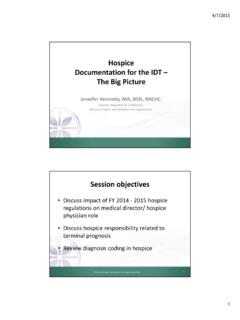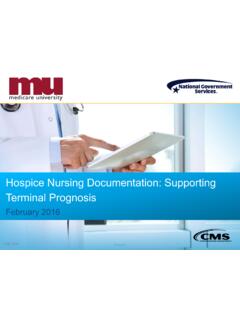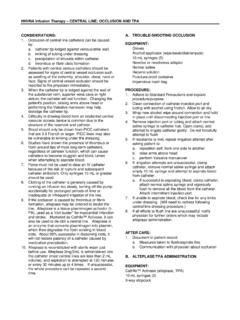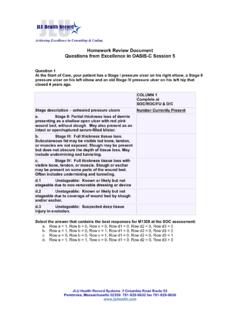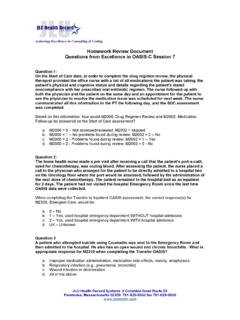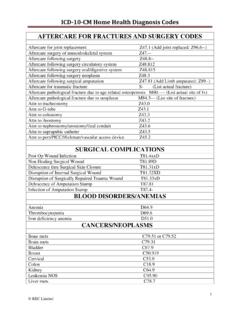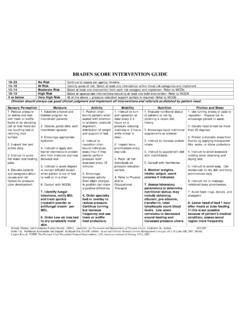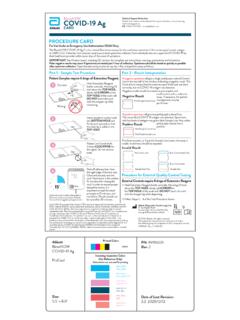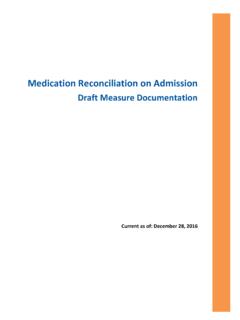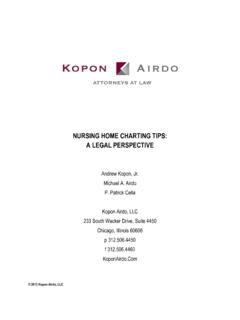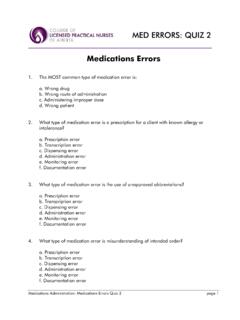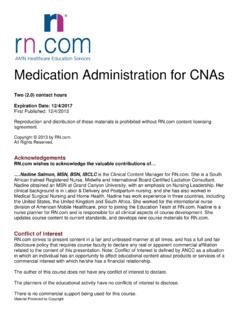Transcription of 7 Rights of Medication Administration for Nurses
1 7 rights of medication administration for nurses There are actually seven Rights of Medication Administration . There are the typical five Rights of Medication Administration and two more that you may be unaware of. Before giving the patient a Medication , make sure that you talk with the patient and explain what the Medication is for. If the patient has any questions about the Medication or its side effects, you should try to answer those questions. Try to involve the patient in the Medication -giving process as they may need to continue this Medication after they get out of the hospital. When giving Medication , assure yourself and the patient that you are doing so in a private place and do not be distracted while doing your job.
2 Make sure you are giving the Medication in a quiet place that has no distractions. Always stay in visual contact with the Medication and don t walk away unless you take the Medication with you. Always wash your hands before dispensing the Medication and after you have finished giving the Medication to the patient. Prior to giving the Medication , remove the pills or liquid from the locked cupboard in which they are housed and check the bottle against the patient order. Before pouring or dispensing the Medication into the med cup, you should recheck the prescription label against the med order. Then, just prior to giving the Medication but after it has been placed in the med cup, review the med order and the label on the med bottle to make sure you are giving the right Medication to the patient.
3 Let s take a look at the Rights of Medical Administration : 1. Right Individual. You need to check at least two sources to make sure you are giving the Medication to the right person. Even if you know the patient well, it is possible to make a mistake and to give the Medication to the wrong person. This can happen particularly when you are doling out medications to more than one patient at the same time. You can avoid errors by collecting Medication for only one individual at a time. Do not hold onto the Medication but instead give the Medication to the patient immediately. Don t talk to anyone from the time you take the Medication out of the locker and the time you give it to the patient.
4 When you are giving out medications, focus on that task alone and don t do anything from the time you first have contact with the Medication and the time the patient is given the Medication . If there is any doubt that you are giving a Medication to the wrong person, don t give the Medication until you are sure you are giving to the correct individual. 2. Right Medication . This involves reading the med label on the bottle, including the brand name of the Medication and the generic name of the Medication (if both are available). Check to make sure you match the spelling of the med bottle with the spelling of the Medication in the med order. If you aren t sure that the Medication is correct, you need to stop what you are doing and clear up the issue with the doctor or pharmacist.
5 Make use of the nursing supervisor so that you are not the only one questioning the right Medication . Look specifically at the pill itself. If it does not look like the way you remember the pill should look, you need to check again with the pharmacist to make sure the Medication is the correct one. If you make an error in giving the wrong Medication , follow the policy of your agency as there will be a method for reporting these types of Medication errors . 3. Right Dose. The right dose should be labelled in the patient s chart. Check the dose on the patients chart with the dose you are dispensing. You need to be aware of the strength of each Medication you are giving. If the Medication is a liquid, you need to calculate how much of the liquid needs to be dispensed based on the dose ordered in the chart and the dose written on the bottle s label.
6 Ask the pharmacist or the nursing supervisor any time your calculations indicate that you need to give three or more pills of the same Medication at the same time as this is when Medication errors are most likely to occur. If you make an error, follow the policies of your agency regarding giving the wrong Medication . 4. Right Time. Some medications need to be given at the same time every day or at the same time with relationship to the patient s mealtime. Not every Medication will need this policy but you need to know what the policy is regarding when the patient is supposed to be getting the Medication . Make sure you write down the exact time that the Medication was given. If there is no specification about the time you should give the Medication , call the pharmacist, the prescribing doctor, or the nursing supervisor to make sure there is no specific time that the Medication should be given.
7 When you find this out, write it down in the med log so that the nurse after you knows when to give the next dose of the Medication . If the time is specified on the bottle, match it with the order and give it at the time the order says you should give the Medication . If these two times don t match, call the pharmacist or the prescribing doctor for verification. If you make an error, you need to follow the policy of your agency around giving a Medication at the wrong time. In general, you need to give the Medication within one-half hour of when it is supposed to be given (before or after the correct time). If you are giving a prn Medication , check with the patient s record to see when the last time was that the patient last got the Medication and follow the orders.
8 When you write down the time you give the Medication , put your initials next to this time. 5. Right Route. This involves where and how the Medication is given to the patient. Most medications are taken orally but this is not the case in all medications. The Medication may be given by rectum, through the skin, in the eyes, in the ears, into the lungs, or into the vagina. If the patient has an NG tube, make sure the Medication fits down the tube and crush it only if the pharmacist says it is okay to crush the Medication . Always compare the route of the Medication listed on the med chart and document how you gave the Medication . If the route on the bottle does not match the route in the order, call the pharmacist or the prescribing physician for clarification.
9 If you make an error, follow the policy of your agency regarding giving the wrong route of the Medication . If you are giving medications at the same time but that are given by different routes, read the label on the bottle to make sure you are giving the right Medication by the right route. If, for example, you are giving eye drops and ear drops, put the eye drop Medication in first, put that Medication away and then put in the ear Medication . 6. Right documentation : You are responsible for documenting whenever you give a Medication . You need to do this documentation at the time it is being administered and not any other time before or after that. Use blue or black ink to make your notes and never use a pencil or white out if you make an error.
10 If you make a documentation error and correct it, circle the mistake and make a notation that says you made a mistake and what you did to rectify it. Do not cross out any documentation you make or write over anything you have written. Check your documentation over (proofread it) to make sure you wrote everything down correctly. If another nurse is available, have him or her look over your documentation . If you make an error, follow your agency s policy on making a documentation error. 7. Right Response. Make sure you document the response the patient has to the Medication . For example, if the Medication is a pain Medication , you need to document the degree to which the Medication alleviated the pain.

